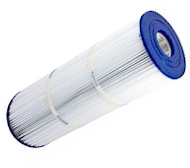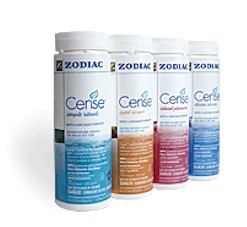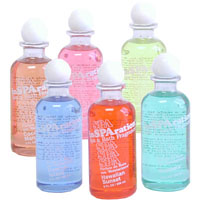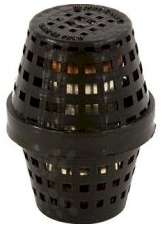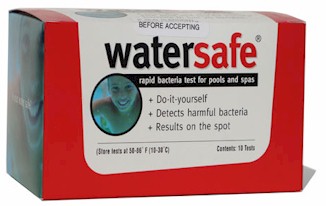|
|
269-978-1983
|
| |
|
|
|
|
|
|
|
|
|
|
|
|
|
|
Popular Products:
|
|
|
|
|
|
|
|
|
|
|
| |
|
Swimming Pool and Hot Tub Water:Problems with Free Chlorine
Chloramines, also known as combined chlorine, are the result of too little free available chlorine in your water. Free available chlorine (which we will just refer to as "free chlorine") is the type of chlorine that kills bacteria in your water. Free Chlorine is the chlorine that's searching high and low in your water for bacteria to destroy. Once it finds bacteria, it attaches to it, which kills the bacteria and forms a chloramine (or combined chlorine). When free chlorine combines with nitrogen or ammonia compounds in your water to form chloramines, it loses the majority of its ability to sanitize correctly.
How are chloramines formed?
Chloramines are made any time nitrogen or ammonia are present in the water. Nitrogen and ammonia can be introduced to the water through bodily fluids, such as sweat, saliva, and urine. They can also be introduced into the water by rainfall, dirt, and other debris.
Problems with chloramines
Chloramines are generally gaseous and are also very poor sanitizers, which leads to funny-smelling water that can cause a number of aggrivating physical symptoms for bathers, such as:
- Red or burning eyes
- Burning nose/throat/lungs
- Dry or itchy skin and hair
- Breathing difficulty, which can cause "swimmers' asthma"
Chloramines - not free chlorine - are what cause that strong chlorine smell often associated with pools (particularly public pools, due to the high volume of bathers).
You might also notice that the water has become cloudy or green with algae, due to the poor sanitization as a result of the chloramines. Your might also want to check if you have any dangerous bacterial growth in your water, due to the poor sanitization caused by the lack of free chlorine. This can be done with the Watersafe Rapid Bacteria Test Strips.
How to test for chloramines
You can use the AquaChek Yellow Test Strips to test for your free chlorine and your total chlorine levels. Then, some simple math can be used to find out your combined chlorine level (ie the amount of chloramines in your water):
Combined chlorine = total chlorine - free chlorine
Any combined chlorine level above 0.3 PPM (PPM = Parts Per Million) should be treated to remove the chloramines from the water. The combined chlorine level should also never exceed 50% of the free chlorine value.
How to prevent or remove chloramines from your water
You can use one of two methods to eliminate the excess chloramines from your water, or better yet, to prevent them from taking over in the first place:
- Add Pool Solutions Non-Chlorine Shock to your water.
- Add Pool Solutions Cal Shock 65 to your water. This will, in essence, "Super-chlorinate" your water. *When utilizing this method, swimmers and bathers should wait 8 hours after the treatment before reentering the water.*
Both methods will destroy the nitrogen or ammonia compounds. As the compounds are destroyed, your free chlorine levels will rise back up to their appropriate levels, meaning the dead bacteria will be filtered out of your water, the chlorine smell will go away, and your chlorine will be able to do its job sanitizing your water again!
If you're all done with your treatment, and your sanitizer levels are still below 1 PPM, you should add more sanitizer to your hot tub or sanitizers to your pool, in order to be sure your pool or hot tub will sanitize correctly in the first place.
|
|

